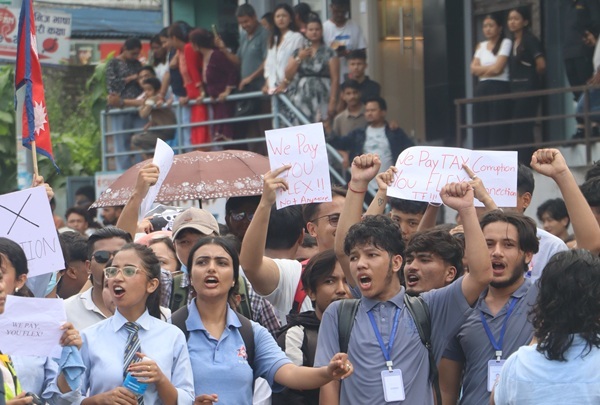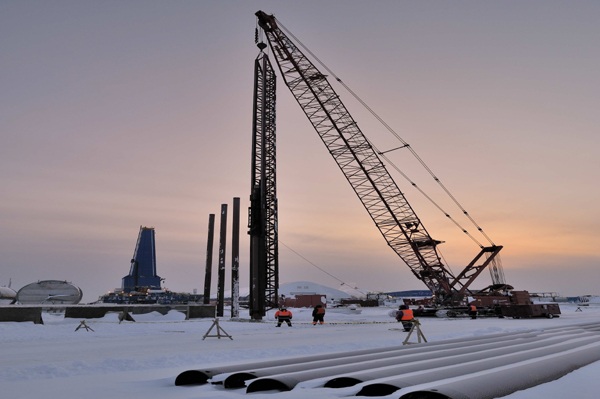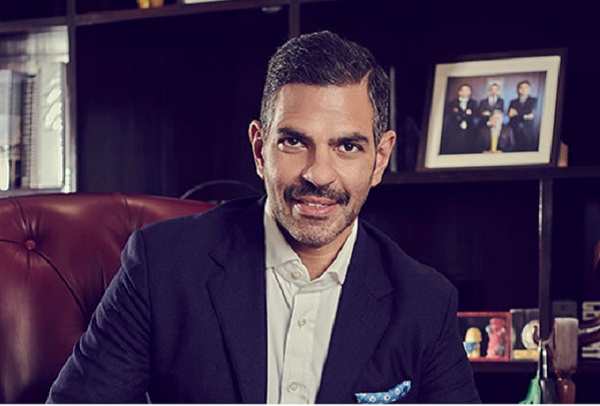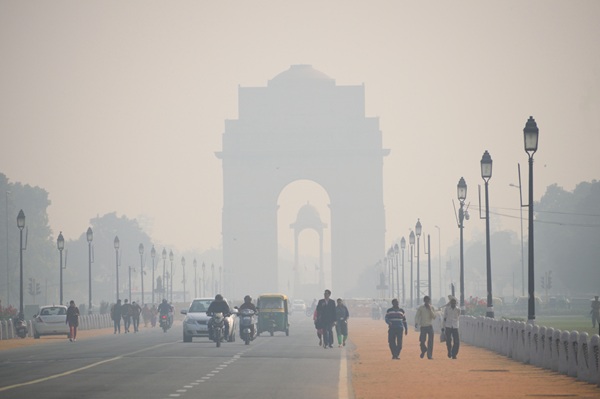.png)
Nepal’s Spirit of Repair and Revolt Holds Lessons for the World
In Kathmandu’s squares, scaffolding holds up temples shattered in 2015. That same resilience fuels Gen Z’s revolt and holds a lesson for India’s economy.


By Phynix
September 15, 2025 at 5:15 AM IST
Dear Insighter,
There’s something about being caught in a Kathmandu downpour that teaches you enough about life. It was 2017, and we were trapped in a supermarket, watching two Australians debate a monsoon shower with the strategic dread of generals planning a campaign. After much agonising, one declared, “Right, let’s just brave it,” and they sprinted into the deluge. It became my travel mantra for every subsequent hiccup. But more importantly, it was my first lesson in Kathmandu’s essential philosophy: sometimes you can’t wait for perfect conditions.
That trip was a revelation. Nepal served us a buffet of experiences: the tranquillity of the Shanti Stupa and Kopan Monastery, and the bustling rituals at Pashupatinath. But also the tongue-tingling gyuma sausages and momos at Dechenling Garden in Thamel, and the sheer joy of a thakali thali where every chutney and side dish held its own. Peace in the mornings, rushed in the evenings, and in between, the sense that you were in a place refusing to choose between serenity and chaos.
The contrast between Pokhara and Kathmandu was… intoxicating. In Pokhara, we cycled along Basundhara Park; the lakeside stillness was almost cinematic and meditative. The nights were dedicated to gazing out the balcony at the snow-clad Himalayas. Meanwhile, pub crawls in Thamel were exhilirating. One night, we stumbled into a pub hidden behind a shopping arcade stairwell. Inside: rows of tables, strangers head-banging and bonding over live Metallica covers and Nepali rock anthems. The kids in leather jackets weren’t just living for the moment; they were bottling a kind of youthful electricity that could just as easily power change as it could light up a bar.
And yet, the scars were unavoidable. Two years after the 2015 earthquakes, Kathmandu wore its wounds openly. At Durbar Square, centuries-old temples stood like broken but tall, their woodwork held together by bamboo scaffolding. Life didn’t skirt the damage; it flowed through it. Chaiwallahs boiled milk beside fractured plinths, children played in dust-streaked courtyards still being cleared, tourists wandered past ruins with the same reverence as monuments. Nepal wasn’t moving on—it was moving with loss and pain, with the stubbornness of a people determined to keep living in the present tense of disaster. That was Kathmandu’s soul: not denial, not nostalgia, but scaffolding and survival.
Fast forward to last week, and that scaffolding spirit re-emerged. Only this time, it wasn’t about temples but about politics. The same generation that filled those bars and live gigs was now setting parliament on fire. Gen Z didn’t just protest; they toppled a government with a hashtag. As Kirti Tarang Pande observed, the world’s most condescended-to generation turned out to be its most underestimated risk.
Rajesh Mahapatra and S.D. Muni describe it as spontaneous combustion: disillusioned youth finally torching a political class steeped in corruption and nepotism. Saibal Dasgupta, in conversation with Dr. Pramod Jaiswal: “an entirely spontaneous movement as Gen Z has rejected political leaders of all parties.” The result? Nepal’s first woman prime minister, Sushila Karki, propelled not by backroom deals but by Discord servers and street fury. More than 50 people died in the process. That’s the cost of braving it when patience runs out.
While Nepal burned, India chose hesitation. Take Donald Trump’s tariff tantrums. Nilanjan Banik notes that US trade deficits have widened regardless—$78.3 billion in July—while GDP slows. Maybe India’s calm defiance made Washington blink. But the costs are mounting. G. Chandrashekhar warns that $10.8 billion in textile exports could be collateral damage. Srinath Sridharan calculates that a 25% levy on IT services would warp project economics across an industry employing five million people. Ajay Srivastava cautions that silence isn’t strategy; it’s surrender.
Our defences? Repo cuts and GST 2.0, which Babuji K describes as a 'double policy act.' But as Alok Kumar Mishra and Iti Vyas argue, relief on paper won’t translate into resilience if consumption remains anaemic. TK Arun’s analysis shows it’s more theatre than therapy. Consumers don’t see the full benefit, while Rajesh Mahapatra warns that structural rot like flat wages and stagnant jobs can’t be solved by tinkering with tax slabs.
And then comes our obsession with size. India loves a big number. We merge public sector banks into behemoths, assuming scale equals strength. But as R. Gurumurthy argues, merging balance sheets doesn’t erase bad governance. SBI is among the world’s top fifty by size but still does not have global heft.
Our IT sector is just as guilty. BasisPoint Groupthink points out that Indian firms spend 1% on R&D while Microsoft spends 13%. We don’t build Windows or iPhones, we build billing efficiencies. They remain cash cows, not tech leaders.
Meanwhile, in cotton and agri-trade, Chandrashekhar highlights ad hoc policies that lurch without continuity, while Sanjay Mansabdar fears NCDEX’s entry into equities may quietly kill agricultural derivatives.
Yet there are glimmers of ingenuity. Krishnadevan V delights in the irony of Urban Company’s IPO: an eternally late culture paying a premium for punctuality platforms. Matrimony.com, as he notes, suffers the paradox of losing when its customers succeed.
BasisPoint Groupthink highlights how SEBI’s IPO reforms could finally unleash mega-cap companies with less float. Omkar Ghaisas makes the case for liquidity breathing trust into AIFs. And in an explainer that goes beyond the basics, V. Thiagarajan takes us through the mechanism of how the RBI steers the rupee’s course.
But let’s return to Kathmandu’s scaffolding. Those temples weren’t beautiful despite the bamboo poles holding them up; they were beautiful because of them. The honesty of repair was its own kind of architecture. India needs that honesty. We must admit where our economic temples are in need of reinforcement—our banks, our IT complacency, our trade indecision—and build scaffolding that is real: governance reform, innovation, clarity of purpose. Not just cosmetic facades or headline mergers.
The people of Nepal are teaching us once again that resilience isn’t about preventing earthquakes; it’s about how you choose to rebuild after. You can wait for perfect conditions. Sometimes, like those Australians in the downpour, or Nepal’s Gen Z with their hashtags, you just face it.
Standing still is not an option. The weather may clear or you may just get wet—but at least you’ll be moving.
Until next time, here’s to braving it.
ALSO READ
- Tight Race; Voter Turnout, Last Minute Swings Remain Key by Amitabh Tiwari: Jan Suraj may decide Bihar’s knife-edge contests, echoing 2020’s LJP impact.
- Trump Comes Calling with Trick or Treat, But Tweets Can’t Mend Fractures by Srinath Sridharan: Social media warmth masks structural trade and policy divergences.
- A New Approach in Trump’s War On Powell by BasisPoint Groupthink: Trump mixes satire and critique to target Powell without brute force.
- Trying to be a “Good Economist” in the Times of US Tariffs by Vijay Chauhan: True economists look beyond visible impacts to hidden costs and long-term shifts.
- Powell's Last Chance to Protect the Fed by Mohamed A. El-Erian: Continued inaction risks leaving the Fed more damaged amid slipping mandates.
- The Shifting Landscape of Global Terror by Lt Gen Syed Ata Hasnain: Transnational terrorism has evolved; threats remain relevant from Kashmir to Gaza.
- Global Trade Is Winning Trump's War On It by Daniel Gros: Despite tariffs, global trade has proven more resilient than expected.
- France's Manufactured Debt and Government Drama by Jean-Pierre Landau: French bond yields hit highs unseen since 2011, raising fiscal concerns.
- China's "Trump" Card by Ian Bremmer: Xi pitches a sovereignty-first, multipolar alternative to Western-led global order.
- Israel’s Doha Strike: Hard Power, Safe Havens, And the Future of Warfare by Lt Gen Syed Ata Hasnain: Norms restraining state action are eroding.
- Europe’s Carbon Border Tax will Test the Steel of India’s Green Resolve by Hemachandra Padhan: India faces a choice to defend or lead a green industrial shift.
- Sarci-Sense: Don’t Ask, Don’t Tell, Sounds Like Indian Middle Age by Srinath Sridharan: Money, mortality, and desire remain unsaid amid middle-age routines.
- Gen X at the Crossroads of Care by Kalyani Srinath: Gen X balances elder care and parenting while keeping households humming.
- Why Cultural Capture Demands a Rethink of Regulatory Basics by Rabi N. Mishra: Gradual institutional drift can erode standards and accelerate failure.



